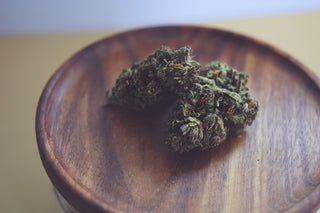
People have been exploring cannabis’ healing properties for centuries. Over time we’ve learned an abundant amount of information about the plant and discovered different aspects such as terpenes, cannabinoids, and flavonoids. Cannabinoids in particular have offered a rich glimpse into what the cannabis plant is capable of.
Enter two prominent cannabinoids: cannabigerol (CBG) and cannabidiol (CBD). Since the duo was first popularized, these cannabinoids have demonstrated cannabis is much more than meets the eye. While they are complementary in some ways, there are also vast differences between CBG and CBD. We’re going to take a deeper look into what CBG and CBD are and aren’t, as well as answer your need-to-know questions such as the potential benefits of CBG and CBD, and how to get them to work their magic.
How are CBD and CBG Similar?
Both CBD and CBG Are Thought to be Therapeutic Cannabinoids
CBG and CBD are as old as the cannabis and hemp plants from which they are derived, but their properties have only been recently recognized. Derived from cannabigerolic acid (CBGa), both of these key cannabinoids interact with the CB1 and CB2 receptors and are considered natural therapeutics, meaning they often offer favorable outcomes for those who use them. CBG and CBD alike have been cited for expressing anti-inflammatory and anti-oxidative properties that are conducive to managing pain.
Although both of these cannabinoids are found naturally in the cannabis plant, they are often extracted to create products that are easy for consumers to approach. These range from edibles such as CBG lollipops and CBD gummies to cannabinoid-dominant dried flower and packaged CBD/CBG blend prerolls.
What CBD and CBG Are Not
CBG and CBD have a similar origin and have been used for similar medicinal purposes. Likewise, they are often similarly maligned with a few false facts. Let’s dispel a couple of their most common myths.
First, both CBG and CBD are non-psychoactive cannabinoids. This means that when you use them, they will not get you intoxicated. Tetrahydrocannabinol (THC) is the intoxicating cannabinoid of the cannabis plant.
Furthermore, only one CBD product is FDA-approved, and the medicinal benefits are still being studied before other CBD products will be evaluated for approval. Moreover, no CBG product has been approved, though there is hope that could change in the future.
What’s the Difference Between CBG and CBD?
Now that we’ve covered some of CBG and CBD’s similarities, it’s important to get an understanding of how these two cannabinoids vary. Most notably, CBG and CBD have distinct molecular structures that cause each to bond to the body’s endocannabinoid system differently. CBG and CBD also activate receptors differently. One study noted that CBG and CBD interact with the 5-HT1A serotonin receptor differently, with CBG behaving as an antagonist while CBD acting more as an agonist, meaning it provoked more of a response.
There is also research encapsulating CBG and CBD’s effects on appetite stimulation. According to one study, CBG may increase feelings of hunger while another study noticed that CBD may decrease the likelihood of feeling hungry.
Indulge in the Benefits of CBG and CBD With Hhemp.co
CBG and CBD each offer unique attributes, and folks can test out various consumption methods to see their individual effects. However, we believe these cannabinoids may offer even more when they are used concurrently due to the “entourage effect.” Much of Hhemp.co’s line employs a special CBG and CBD blend to grant full access to these cannabinoids’ benefits that we call the “ultra-entourage” effect. If you’re looking to sample uplifting effects with choice CBG and CBD edibles, try out our Blood Orange CBG + CBD Energy Lollipop. More of a hemp flower lover? See how CBG and CBD could benefit you with our pre-blended CBG and CBD hemp flower pouch.
Around the nation, people have been paying attention to CBG and CBD’s rise in popularity. It’s clear these cannabinoids have tons of potential, and it’s vital to get up close to explore how they might work for you. The bottom line is both of these cannabinoids pack a powerful punch and sometimes the best way to access their benefits is by trying a combined approach with a brand you can trust. For more coverage on CBG and CBD, check out our educational series on CBG and keep an eye out for new educational content that provides information on how cannabis could help aid in your health journey.



